Results 2,951 to 2,960 of 12096
Thread: Anandtech News
-
05-30-13, 06:30 PM #2951
Anandtech: NVIDIA GeForce GTX 700M Series Launched
At the beginning of April, Jarred walked us through the refresh of the bottom two-thirds of NVIDIA's 700M series of GeForce GPUs, all under the GeForce GT heading. We still didn't have any idea what their solutions at the top end would be, though. Today we have those details with the launch of the GTX 700M series.
Note that the 680MX (not listed) exceeded the 100W TDP and was never made available in notebooks; it was an iMac exclusive GPU. Spec-wise it was identical to the 780M, but had a slightly lower core clock at 720MHz. That means that in the 700M series, NVIDIA has a fully-enabled GK104 chip at the top of the pack and I can confirm you'll be seeing it in notebooks since I have one of those notebooks in for testing as I write this.GTX 660M GTX 760M GTX 670MX GTX 765M GTX 675MX GTX 770M GTX 680M GTX 780M GPU* GK107 GK106 GK104 or GK106 GK106 GK104 or GK106 GK106 GK104 GK104 CUDA cores 384 768 960 768 960 960 1344 1536 Base Clock 835MHz 657MHz+ 600MHz 850MHz+ 600MHz 811MHz+ 720MHz 823MHz+ Memory Clock 4GHz 4GHz 2.8GHz 4GHz 3.6GHz 4GHz 3.6GHz 5GHz Memory Bus Width 128-bit 128-bit 192-bit 128-bit 256-bit 192-bit 256-bit 256-bit Memory Config 2GB GDDR5 2GB GDDR5 3GB GDDR5 2GB GDDR5 2GB/4GB GDDR5 3GB GDDR5 2GB/4GB GDDR5 4GB GDDR5
NVIDIA has made some incredibly impressive gains in potential performance with the GTX 700M series. Core clocks are up across the board, memory clocks even more so, and NVIDIA is bringing GPU Boost 2.0 to the table with all of these parts to allow as much as 15% higher clocks during gaming. Unfortunately I don't quite have all the benchmark results available yet for the new 780M to compare against the outgoing 680M, but you'll be able to see them in a full review in not too long.
As far as specs go, the big jumps are easily visible in the above table. At the top, GTX 780M gets 14% more shaders than GTX 680M, courtesy of the full GK104 chip, but it also gets a base clock that's at least 14% higher, giving a theoretical performance increase of 30%. The memory clock receives a similar increase, this time to the tune of 39%, so we should definitely see a large jump in performance at the top of the product stack.
Stepping down to the GTX 770M, the changes are a bit more difficult to guage. We have the same number of cores as the GTX 675MX at a higher clock, giving 35% more compute power, but memory bandwidth has dropped 17% thanks to the 192-bit bus. In situations where games are compute constrained, we'll see much improved performance, but bandwidth hungry games may end up slower. We see a similar situation with the GTX 765M vs. the GTX 670MX, with a 128-bit bus on the new model and fewer cores at higher clocks. On paper, the GTX 765M has 13% more compute and 5% less bandwidth than the 670MX.
Rounding things out, at the bottom we finally have an x60M part that's worthy of the GTX designation. The GTX 660M was really just a moderate clock speed increase over the GT 650M. This time, the GTX 760M gets twice as many cores as the GT 750M, and while clock speeds are slightly lower it should still result in compute performance that's 35% higher than the closest non-GTX part; the GTX 760M also has 57% more compute than the previous GTX 660M. The bandwidth story is a bit more difficult to call, with an effective 64GB/s behind the GPU core; the GTX 660M had 4GHz GDDR5 as well, but 750M comes with up to 5GHz GDDR5. Sigh. Can't we get rid of the give and take for a change and have a clear winner? At least there are no DDR3 options listed for the GTX parts, but that's been the case for a few generations now.
We can't talk about Haswell yet, so you'll have to wait a bit longer for our first GTX 780M notebook review, but overall we're looking at some relatively sizeable gains over the 600M, with GPU Boost 2.0 potentially increasing the performance even more. Considering Intel's GT3e parts are expected to at least flirt with GT 650M levels of performance (depending on the game and at substantially lower power draws), this sort of performance upgrade isn't particularly surprising. Now we just need to wait for hardware to start shipping.
Update: BioShock Infinite is able to produce 41.5 fps at our enthusiast settings, which are 1080p and all the settings dialed up. The outgoing GTX 675MX produced only 35.6 fps, while HD 7970M currently gets 45.3 fps.
More...
-
-
05-31-13, 02:02 AM #2953
Anandtech: NVIDIA GeForce GTX 700M Series Launched
At the beginning of April, Jarred walked us through the refresh of the bottom two-thirds of NVIDIA's 700M series of GeForce GPUs, all under the GeForce GT heading. We still didn't have any idea what their solutions at the top end would be, though. Today we have those details with the launch of the GTX 700M series.
Note that the 680MX (not listed) exceeded the 100W TDP and was never made available in notebooks; it was an iMac exclusive GPU. Spec-wise it was identical to the 780M, but had a slightly lower core clock at 720MHz. That means that in the 700M series, NVIDIA has a fully-enabled GK104 chip at the top of the pack and I can confirm you'll be seeing it in notebooks since I have one of those notebooks in for testing as I write this.GTX 660M GTX 760M GTX 670MX GTX 765M GTX 675MX GTX 770M GTX 680M GTX 780M GPU* GK107 GK106 GK104 or GK106 GK106 GK104 or GK106 GK106 GK104 GK104 CUDA cores 384 768 960 768 960 960 1344 1536 Base Clock 835MHz 657MHz+ 600MHz 850MHz+ 600MHz 811MHz+ 720MHz 823MHz+ Memory Clock 4GHz 4GHz 2.8GHz 4GHz 3.6GHz 4GHz 3.6GHz 5GHz Memory Bus Width 128-bit 128-bit 192-bit 128-bit 256-bit 192-bit 256-bit 256-bit Memory Config 2GB GDDR5 2GB GDDR5 3GB GDDR5 2GB GDDR5 2GB/4GB GDDR5 3GB GDDR5 2GB/4GB GDDR5 4GB GDDR5
NVIDIA has made some incredibly impressive gains in potential performance with the GTX 700M series. Core clocks are up across the board, memory clocks even more so, and NVIDIA is bringing GPU Boost 2.0 to the table with all of these parts to allow as much as 15% higher clocks during gaming. Unfortunately I don't quite have all the benchmark results available yet for the new 780M to compare against the outgoing 680M, but you'll be able to see them in a full review in not too long.
As far as specs go, the big jumps are easily visible in the above table. At the top, GTX 780M gets 14% more shaders than GTX 680M, courtesy of the full GK104 chip, but it also gets a base clock that's at least 14% higher, giving a theoretical performance increase of 30%. The memory clock receives a similar increase, this time to the tune of 39%, so we should definitely see a large jump in performance at the top of the product stack.
Stepping down to the GTX 770M, the changes are a bit more difficult to guage. We have the same number of cores as the GTX 675MX at a higher clock, giving 35% more compute power, but memory bandwidth has dropped 17% thanks to the 192-bit bus. In situations where games are compute constrained, we'll see much improved performance, but bandwidth hungry games may end up slower. We see a similar situation with the GTX 765M vs. the GTX 670MX, with a 128-bit bus on the new model and fewer cores at higher clocks. On paper, the GTX 765M has 13% more compute and 5% less bandwidth than the 670MX.
Rounding things out, at the bottom we finally have an x60M part that's worthy of the GTX designation. The GTX 660M was really just a moderate clock speed increase over the GT 650M. This time, the GTX 760M gets twice as many cores as the GT 750M, and while clock speeds are slightly lower it should still result in compute performance that's 35% higher than the closest non-GTX part; the GTX 760M also has 57% more compute than the previous GTX 660M. The bandwidth story is a bit more difficult to call, with an effective 64GB/s behind the GPU core; the GTX 660M had 4GHz GDDR5 as well, but 750M comes with up to 5GHz GDDR5. Sigh. Can't we get rid of the give and take for a change and have a clear winner? At least there are no DDR3 options listed for the GTX parts, but that's been the case for a few generations now.
We can't talk about Haswell yet, so you'll have to wait a bit longer for our first GTX 780M notebook review, but overall we're looking at some relatively sizeable gains over the 600M, with GPU Boost 2.0 potentially increasing the performance even more. Considering Intel's GT3e parts are expected to at least flirt with GT 650M levels of performance (depending on the game and at substantially lower power draws), this sort of performance upgrade isn't particularly surprising. Now we just need to wait for hardware to start shipping.
Update: BioShock Infinite is able to produce 41.5 fps at our enthusiast settings with the GTX 780M, which are 1080p and all the settings dialed up. The outgoing GTX 675MX produced only 35.6 fps, while HD 7970M currently gets 45.3 fps.
More...
-
05-31-13, 05:00 AM #2954
Anandtech: Razer Announces Haswell-based Blade, Blade Pro Gaming Notebooks
We’ve spent a fair amount of time with the first two generations of Razer Blade, and honestly really enjoyed most of it. The original Blade released as a highly ambitious 17” Sandy Bridge gaming notebook from a company that previously had no history in the PC space. While the design was very polished, it had issues with performance, thermals, driver stability, and above all, price. The second generation Blade released with Ivy Bridge and improved on all of its predecessor’s issues - far more compute and GPU horsepower, a refined cooling design, and it was a good bit cheaper, to boot. Now, with Haswell right around the corner, we have the third generation of Blade. And this time, there are two of them.
The 17” is still around, now known as the Blade Pro, but the big news here is the new $1799 14” Razer Blade. It’s a 0.66” thick notebook with a quad-core i7 Haswell mobile processor and NVIDIA’s new GTX 765M graphics with 2GB of GDDR5 video memory, along with an mSATA SSD and 8GB of DDR3L-1600 memory. It’s a little bit smaller than the 15” retina MacBook Pro in all dimensions - 13.58 x 9.25 x 0.66” versus 14.13 x 9.73 x 0.71” - and takes a healthy amount of design inspiration from the latest Apple portable. Given the form factor and weight (4.1 pounds), the Blade 14” has a staggering amount of compute on board.
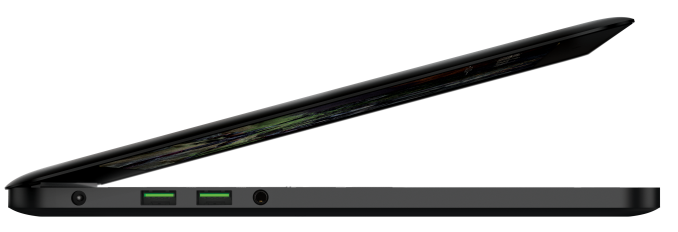
The CPU is one with GT2 (HD4600) graphics, which makes sense given that there’s little incentive to ship a SKU with a better on-die GPU with the presence of a powerful dedicated graphics card. Dustin is covering the GTX 700M launch, but it’s worth going over GTX 765M quickly: it’s still 28nm Kepler, a cut-down version of GK106 with four SMXs active instead of five for a total of 768 CUDA cores, a 128-bit memory bus, and support for GPU boost. It’s basically the same as GTX 760M except with a higher base clock of 850 MHz instead of 657 MHz; both 760M and 765M have a 2 GHz memory clock. This would seem to bring back a level of differentiation between the GT and GTX designations in the GeForce lineup. GT 750M is also GK106-based, but with only two SMXs active, it definitely has a lot less horsepower than GTX 760M and 765M. (Some GT 750Ms will be based on GK107, but that’s a different story entirely.) GTX 660M (in the 2nd gen Blade) was really just an overclocked GT 650M GDDR5, and some, including your humble narrator, felt that the performance wasn’t elevated enough to merit the GTX name. There shouldn’t be any such issues this time around.
Other specs include dual-band WiFi courtesy of Qualcomm, a 70Wh battery (claimed 6 hours of runtime), usual Razer goodies like a backlit, fully anti-ghosted Synapse 2.0-enabled keyboard, a Synaptics touchpad with real, physical mouse buttons, 3 x USB 3.0 ports, HD 720p webcam, and a 14.0” 1600x900 TN display. This is the only thing on paper that really stands out to me as an issue - no thin and light notebook shipping at this price point should come with a non-IPS, non-1080p display. I don’t think response time is enough of an issue to merit not shipping a wide-angle display. ASUS has been shipping 11” and 13” notebooks for $1000 or less with 1080p matte IPS displays, so has Vizio, amongst others. It’s a big miss. I’m not going to judge panel quality until I’ve seen it (assuming it will be as good as the TN panel of the 17” Blade/Pro), but I still don’t like the choice of display on paper.
The other issue I have is that the base $1799 model ships with just 128GB of disk space - solid state drives are cheap enough at this point that it shouldn’t be an issue to ship a 256GB drive standard in a computer at this price point, especially when you consider the size of game installs these days. Razer charges $150 to go from 128GB to 256GB on the Edge Pro, so I’d expect something similar for the upgrade pricing here as well. A 512GB SKU will be available as well.
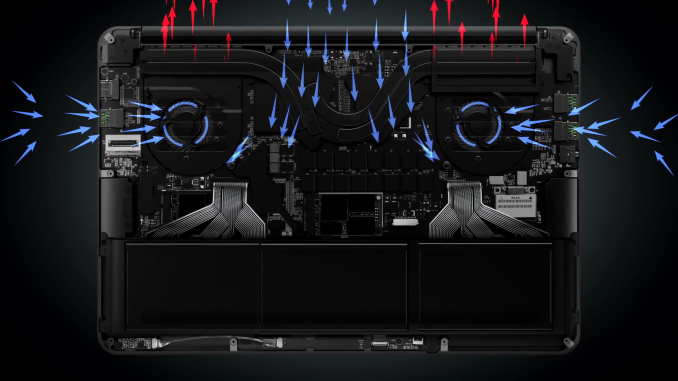
If you’re counting, that’s a 37W CPU and a 50-60W GPU, so very quickly we see that the power envelope of the 14” Blade is a lot higher than what we’re used to seeing in this size class. The design challenges that come with a 100+ watt TDP in an ultrathin chassis will be interesting to see - we know that the bottom is pretty well vented, with an additional intake and exhausts hidden the hinge as well, but I don’t see the Blade running particularly cool in loaded situations without some thermal engineering fairy dust. What it does have, in spades: insanity. I’ve talked about this before in some of my reviews, but I think it’s something that the computer industry has lost a bit of recently. We just don’t see these ridiculously ambitious thermal envelopes anymore. Laptops like Alienware’s original mid-2007 M15X (C2D/C2X and Nvidia’s 8800M GTX in a 15.4” notebook) and the ASUS A8Js (C2D/GeForce Go 7700, 14”, 5.3lbs), amongst others - they don’t come around very often these days (exceptions: Clevo’s W110ER and the rMBP15). The era of performance thin and lights seems to have mostly ended at the hands of the ultrabook, and there aren’t too many performance ultrabooks out there. So, as to me at least, this Blade is an incredibly exciting system simply for the amount of power it harnesses in a system of this size.

The 17” Blade Pro specsheet reads really similarly - the Haswell quad (a 47W part this time), GTX 765M at the same clock speeds as the smaller Blade, 8GB of DDR3L-1600, and 128/256/512GB SSD options are all here, this time with a 17.3” 1080p display and the now-familiar Switchblade UI. It retains the aluminum chassis from the second generation Blade, which was basically just an internally reworked version of the original Blade shell - the industrial design, which I very much enjoyed the last two times, is back for another go around. The display is likely to be the same AUO TN panel from last time as well; it was good enough in the previous Blades but I would still like to see some kind of wide-angle panel technology used.
Price has dropped to $2299, though that’s for a model with just 128GB of storage. Oddly, the mSATA SSD is the only storage device mentioned in the press release, so I’m not sure what is located in the 2.5” bay (the 2nd generation Blade had 2.5” 7200RPM hard drive paired with a large 64GB mSATA cache, while the original shipped with a 2.5” 256GB SSD). Razer’s specsheet claims a slight weight reduction to 6.58 pounds, but otherwise it’s dimensionally identical to the Blade R2.
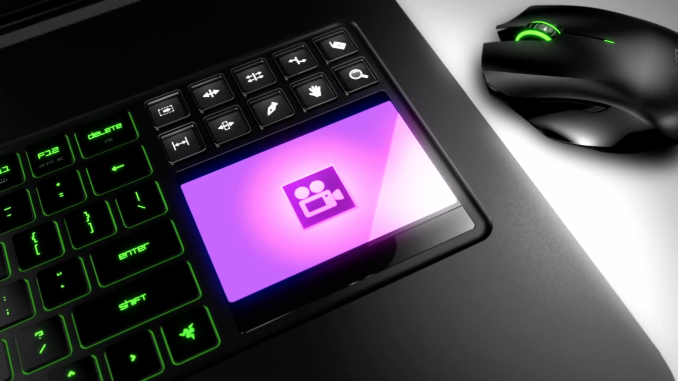
Based on the marketing materials and videos provided, it seems like the intended market for the 17” Blade Pro has shifted towards creative professionals – game designers, filmmakers and video producers, graphic artists, even musicians. The change makes sense, given the similarities the Blade Pro has to another favorite of creative professionals, the dearly departed 17” MacBook Pro. Razer has also added Switchblade apps for Photoshop, Premiere, Maya, GIMP, and other popular photo, video, and audio creation programs to leverage the unique abilities of the SBUI panel. In the Blade Pro introduction video, you can see members of the alt rock band Fall Out Boy, YouTube comedian Freddie Wong, and other professionals from the entertainment industry talking about the Blade Pro in compute-heavy working environments. It’s certainly interesting, and Razer is pushing it further by offering the Blade Pro at a discount to design students, game developers, and other professionals in the various digital arts fields through their creative professional pricing program.
Both Blades are slated to go on sale in Q2, so they’ll probably be available sometime in the next few weeks. We’ll be going hands on with both the new Blade and the Blade Pro shortly, and will update with impressions after that.
Source: YouTube (Blade), YouTube (Blade Pro)
More...
-
05-31-13, 07:32 AM #2955
Anandtech: The Chromebook Pixel Review
It arrived in a white nondescript cardboard box, with just a flash of color, and one word on the lid: Google. Inside was a Chromebook. Chromebooks are dull. Chrome OS is quaint. They’re like generic granola bars, they get the job done, but they’re no Clif Bar. Right? Google’s product team didn’t set-out to build a Chromebook, their mission was to design the most covetous and capable machine they could. And there’s no denying that it’s a looker. But is it enough to draw users away from their Retina MacBooks and Ultrabooks? Or is it just a browser in a nice suit?
More...
-
06-01-13, 09:30 AM #2956
Anandtech: Hit the Road, Jack: Intel’s Mobile Quad-Core Haswell SKUs
For those who are just looking for information on the various processor models with their associated features, we wanted to put together a short list of all the parts being launched today to go along with our architecture and performance testing (among other things). Similar to the previous two launches, Intel is starting off with their quad-core parts, to be followed at a later date by dual-core offerings. We’ll actually be going into the Ultrabook parts sooner rather than later, but for now there are no Core i3, Pentium, or Celeron Haswell chips. We’ve got a separate article going over the desktop SKUs, and our focus here will be on the mobile offerings.
On the mobile side of the fence, other than some slight changes to the naming scheme relative to Sandy Bridge and Ivy Bridge (there’s no more “20” suffix on most of the initial models and they’re now “MQ” instead of “QM”), the mobile Haswell rollout is what we expected. There are actually two quad-core mobile processor families, with the M-series being the “traditional” models while the H-series gets some iGPU upgrades and other tweaks.Intel 4th Gen Core i7 M-Series Mobile Processors Model Core i7-4930MQ Core i7-4900MQ Core i7-4800MQ Core i7-4702MQ Core i7-4700MQ Cores/Threads 4/8 4/8 4/8 4/8 4/8 CPU Base Freq 3.0 2.8 2.7 2.2 2.4 Max SC Turbo 3.9 3.8 3.7 3.2 3.4 Max DC Turbo 3.8 3.7 3.6 3.1 3.3 Max QC Turbo 3.7 3.6 3.5 2.9 3.2 TDP 57W 47W 47W 37W 47W HD Graphics 4600 4600 4600 4600 4600 GPU Clock 400-1350 400-1300 400-1300 400-1150 400-1150 L3 Cache 8MB 8MB 6MB 6MB 6MB DDR3/DDR3L 1600 1600 1600 1600 1600 vPro/TXT/VT-d No Yes Yes No No Intel SBA No No No Yes Yes Price $1096 $568 $378
Along with the traditional Extreme part at the top of the hierarchy, we now get a 4900MQ, 4800MQ, and 4700MQ in place of the previous 3820QM, 3720QM, and 3610QM that we saw with Ivy Bridge. The 4800MQ, 4702MQ, and 4700MQ are 6MB L3 cache parts, so only the 4900MQ and 4930MX get the full 8MB L3. Other than the clock speed variations and the lack of vPro/TXT/VT-d on the 470x chips (which at the same time also get the distinction of being part of the Intel Small Business Advantage platform—basically, for non-managed networks), the parts all have HD 4600 Graphics. That means slightly better iGPU performance than HD 4000, but these are GT2 (20 EUs) rather than GT3/GT3e (40 EUs).
TDPs are up 2W relative to Ivy/Sandy Bridge models, but how that will actually play out in practice remains to be seen. Considering the max TDP is rarely hit under mobile workloads, we don’t expect any major changes, and Haswell is introducing a host of other improvements all aimed at delivering better battery life. Dustin has at least one Haswell notebook in for review, with a high-end CPU and dGPU. It won’t be a great representation of battery life, but at least we can get some idea of how much things have changed relative to the 3rd Generation Core i7 processors.
Here’s where things get interesting, the mobile H-Series processors. CPU clocks are down slightly relative to the above M-series, and all of these are 6MB L3 cache parts. To make up for that, Intel has equipped the top three HQ parts with their Iris Pro 5200 iGPU. While having faster integrated graphics may not really matter much on a desktop if you have a discrete GPU, on notebooks we generally always like having the faster iGPU available—you don’t always need a full discrete GPU for some tasks, but the cut-down GT1 of the previous generation sometimes fell short. Heat and noise are also more of a concern with notebooks, so running off the iGPU whenever possible is generally a good thing.Intel 4th Gen Core i7 H-Series Mobile Processors Model Core i7-4950HQ Core i7-4850HQ Core i7-4750HQ Core i7-4702HQ Core i7-4700HQ Cores/Threads 4/8 4/8 4/8 4/8 4/8 CPU Base Freq 2.4 2.3 2.0 2.2 2.4 Max SC Turbo 3.6 3.5 3.2 3.2 3.4 Max DC Turbo 3.5 3.4 3.1 3.1 3.3 Max QC Turbo 3.4 3.3 3.0 2.9 3.2 TDP 47W 47W 47W 37W 47W HD Graphics Iris Pro 5200 Iris Pro 5200 Iris Pro 5200 4600 4600 GPU Clock 200-1300 200-1300 200-1200 400-1150 400-1150 L3 Cache 6MB 6MB 6MB 6MB 6MB DDR3/DDR3L 1600 1600 1600 1600 1600 vPro/TXT/VT-d Yes Yes No No No Intel SBA No No Yes Yes Yes Price $657 $468
Intel has targeted roughly the level of performance offered by NVIDIA’s GT 650M with their Iris Pro 5200 graphics, or roughly a two-fold increase in performance over HD 4000, and that should be enough for everything short of high-quality, high-resolution gaming. What’s even more interesting is that there’s the potential for a reasonable gaming experience with the CPU and iGPU combined still drawing less than 47W of power; GT 650M may still be a better gaming chip, but the combined CPU + dGPU power draw is quite a bit higher than 47W. Of course, even on a 90Wh battery a load of 45W means you’d still get less than two hours of battery life. We’ll see about testing this as soon as we get more time with the hardware.
What I’m not quite getting is the role the 4702HQ and 4700HQ are supposed to fill; they’re still equipped with HD 4600 graphics, just like their MQ relatives, so we’ve asked Intel for clarification. Best guess right now: the MQ and HQ parts are different packages, so the 470xHQ chips are lower-echelon offerings for OEMs/users that don’t necessarily need/want Iris Pro 5200. It’s a way for an OEM to have one laptop that can support a range of processors, rather than locking all the HQ parts into higher-cost CPUs. Maybe down the road, we’ll even see some Core i5 H-Series CPUs, but we don’t have any concrete information on that yet.
For those interested in the desktop side of things, we’ve broken out those parts into a separate Pipeline article.
More...
-
06-01-13, 09:30 AM #2957
Anandtech: Gigabyte's 8-Series Haswell Motherboard Tour [video]
Today is all about Haswell and Gigabyte is kicking things off with a video tour of some of their Haswell motherboard lineup. Colin from Gigabyte stopped by a couple of weeks back to show off some of the latest innovations implemented in Gigabyte's line of 8-series motherboards.
With Haswell the name of the game from the motherboard makers is really polish. With the exception of FIVR (Fully Integrated Voltage Regulator), the 8-series platform is very similar to those that came before it. This gave the motherboard makers time and encouragement to focus on improving user experience as much as possible. As a result we saw tons of attention paid to improving things like UEFI, software utilities and ease of use. Check out the video below to see what Gigabyte did this round.
More...
-
06-01-13, 09:30 AM #2958
Anandtech: Intel’s Haswell: Quad-Core Desktop Processor SKUs
Intel’s Haswell is here, or at least the first salvo of quad-core parts has arrived. Just like we saw with Sandy Bridge and Ivy Bridge, Intel will be releasing Haswell in stages, starting at the high-end and trickling down from there. Today, we can tell you about the quad-core desktop and mobile parts, and we have several other articles going into greater detail on the performance and features you’ll get. These two Pipeline posts are going to strip out all the other stuff and just focus on the processors being launched today. We’ll have a few short tables showing the currently-announced quad-core SKUs for desktops and mobile, and we’ll have another similar post covering the dual-core parts when those are officially announced.
Starting at the top of the product and performance stack, we have the desktop Core i7 parts. All of these CPUs feature Hyper-Threading Technology, so they’re the same quad-core with four virtual cores that we’ve seen since Bloomfield hit the scene. The fastest chip for most purposes remains the K-series 4770K, with its unlocked multiplier and slightly higher base clock speed. Base core clocks as well as maximum Turbo Boost clocks are basically dictated by the TDP, with the 4770S being less likely to maintain maximum turbo most likely, and the 4770T and 4765T giving up quite a bit more in clock speed in order to hit substantially lower power targets.Intel 4th Gen Core i7 Desktop Processors Model Core i7-4770K Core i7-4770 Core i7-4770S Core i7-4770T Core i7-4770R Core i7-4765T Cores/Threads 4/8 4/8 4/8 4/8 4/8 4/8 CPU Base Freq 3.5 3.4 3.1 2.5 3.2 2.0 Max Turbo 3.9 (Unlocked) 3.9 3.9 3.7 3.9 3.0 Test TDP 84W 84W 65W 45W 65W 35W HD Graphics 4600 4600 4600 4600 Iris Pro 5200 4600 GPU Max Clock 1250 1200 1200 1200 1300 1200 L3 Cache 8MB 8MB 8MB 8MB 6MB 8MB DDR3 Support 1333/1600 1333/1600 1333/1600 1333/1600 1333/1600 1333/1600 vPro/TXT/VT-d/SIPP No Yes Yes Yes No Yes Package LGA-1150 LGA-1150 LGA-1150 LGA-1150 BGA LGA-1150 Price $339 $303 $303 $303 $303
It’s worth pointing out that the highest “Test TDP” values are up slightly relative to the last generation Ivy Bridge equivalents—84W instead of 77W. Whether that reflects a change in how they determine TDP or if it’s simply to give more headroom to the top performing parts isn’t clear. On the desktop, this is probably not particularly important—7W in TDP could often end up being just 1-2W in practice—so we’re not really concerned. Mobile TDPs are a different matter, and as we’ll discuss elsewhere they’re all 2W higher, but that could also be thanks in part to the higher performance iGPU.
Nearly all of these are GT2 graphics configurations (20 EUs), so they should be slightly faster than the last generation HD 4000 in graphics workloads. The one exception is the i7-4770R, which is also the only chip that comes in a BGA package. The reasoning here is simple: if you want the fastest iGPU configuration (GT3e with 40 EUs and embedded DRAM), you’re probably not going to have a discrete GPU and will most likely be purchasing an OEM desktop. Interestingly, the 4770R also drops the L3 cache down to 6MB, and it’s not clear whether this is due to it having no real benefit (i.e. the eDRAM may function as an even larger L4 cache), or if it’s to reduce power use slightly, or Intel may have a separate die for this particular configuration. Then again, maybe Intel is just busily creating a bit of extra market segmentation.
Not included in the above table are all the common features to the entire Core i7 line: AVX instructions, Quick Sync, AES-NI, PCIe 3.0, and Virtualization Technology. As we’ve seen in the past, the K-series parts (and now the R-series as well) omit support for vPro, TXT, VT-d, and SIPP from the list. The 4770K is an enthusiast part with overclocking support, so that makes some sense, but the 4770R doesn’t really have the same qualification. Presumably it’s intended for the consumer market, as businesses are less likely to need the Iris Pro graphics.
The Core i5 lineup basically rehashes the above story, only now without Hyper-Threading. For many users, Core i5 is the sweet spot of price and performance, delivering nearly all the performance of the i7 models at 2/3 the price. There aren’t any Iris or Iris Pro Core i5 desktop parts, at least not yet, and all of the above CPUs are using the GT2 graphics configuration. As above, the K-series part also lacks vPro/TXT/VT-d support but comes with an unlocked multiplier.Intel 4th Gen Core i5 Desktop Processors Model Core i5-4670K Core i5-4670 Core i5-4670S Core i5-4670T Core i5-4570 Core i5-4570S Cores/Threads 4/4 4/4 4/4 4/4 4/4 4/4 CPU Base Freq 3.4 3.4 3.1 2.3 3.2 2.9 Max Turbo 3.8 (Unlocked) 3.8 3.8 3.3 3.6 3.6 Test TDP 84W 84W 65W 45W 84W 65W HD Graphics 4600 4600 4600 4600 4600 4600 GPU Max Clock 1200 1200 1200 1200 1150 1150 L3 Cache 6MB 6MB 6MB 6MB 6MB 6MB DDR3 Support 1333/1600 1333/1600 1333/1600 1333/1600 1333/1600 1333/1600 vPro/TXT/VT-d/SIPP No Yes Yes Yes Yes Yes Package LGA-1150 LGA-1150 LGA-1150 LGA-1150 LGA-1150 LGA-1150 Price $242 $213 $213 $213 $192 $192
Obviously we’re still missing all of the Core i3 parts, which are likely to be dual-core once more, along with some dual-core i5 parts as well. These are probably going to come in another quarter, or at least a month or two out, as there’s no real need for Intel to launch their lower cost parts right now. Similarly, we don’t have any Celeron or Pentium Haswell derivatives launching yet, and judging by the Ivy Bridge rollout I suspect it may be a couple quarters before Intel pushes out ultra-budget Haswell chips. For now, the Ivy Bridge Celeron/Pentium parts are likely as low as Intel wants to go down the food chain for their “big core” architectures.
For those interested in the mobile side of things, we’ve broken out those parts into a separate Pipeline article.
More...
-
-
06-01-13, 09:30 AM #2960
Anandtech: The Haswell Review: Intel Core i7-4770K & i5-4560K Tested
This is a very volatile time for Intel. In an ARM-less vacuum, Intel’s Haswell architecture would likely be the most amazing thing to happen to the tech industry in years. In mobile Haswell is slated to bring about the single largest improvement in battery life in Intel history. In graphics, Haswell completely redefines the expectations for processor graphics. There are even some versions that come with an on-package 128MB L4 cache. And on the desktop, Haswell is the epitome of polish and evolution of the Core microprocessor architecture. Everything is better, faster and more efficient.
More...
Thread Information
Users Browsing this Thread
There are currently 8 users browsing this thread. (0 members and 8 guests)




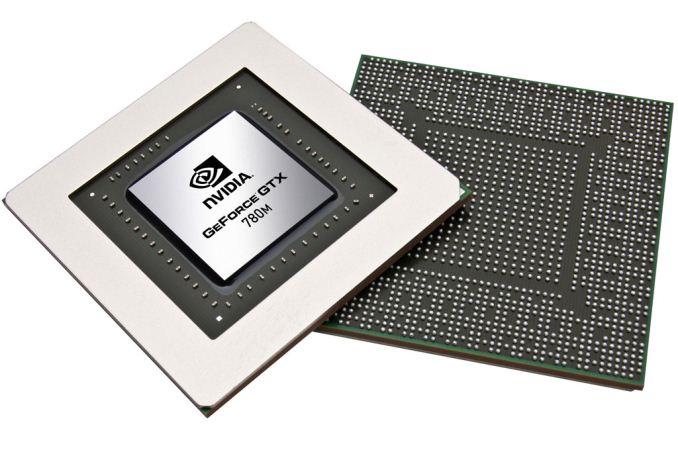

 Quote
Quote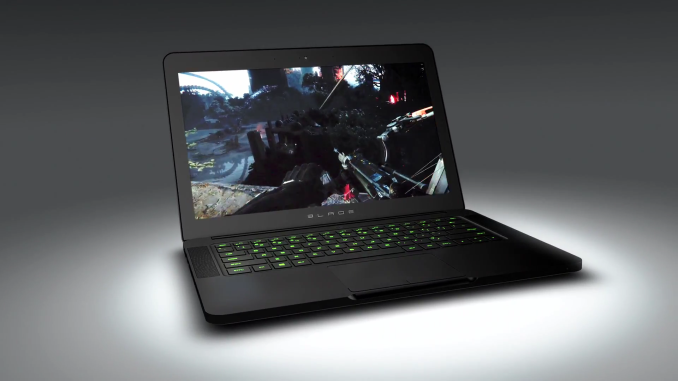
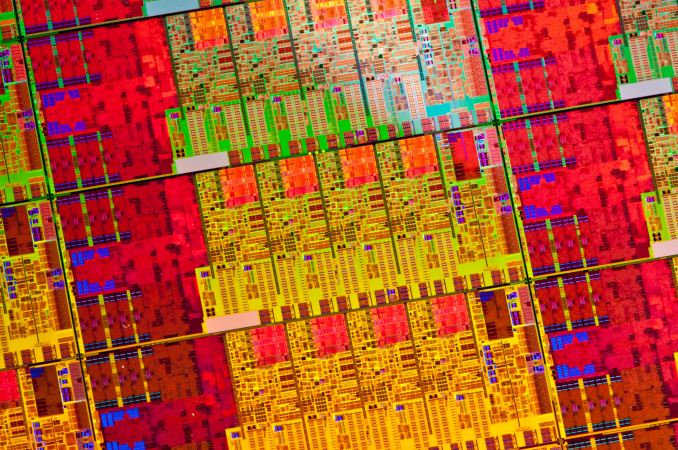
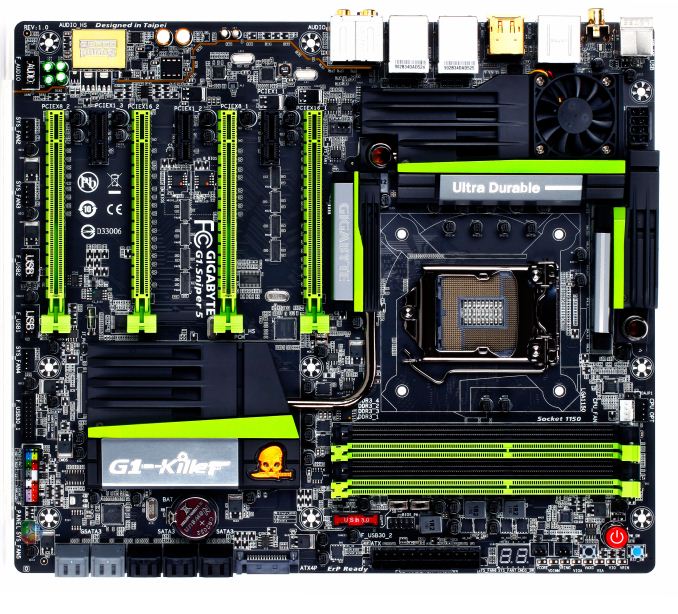
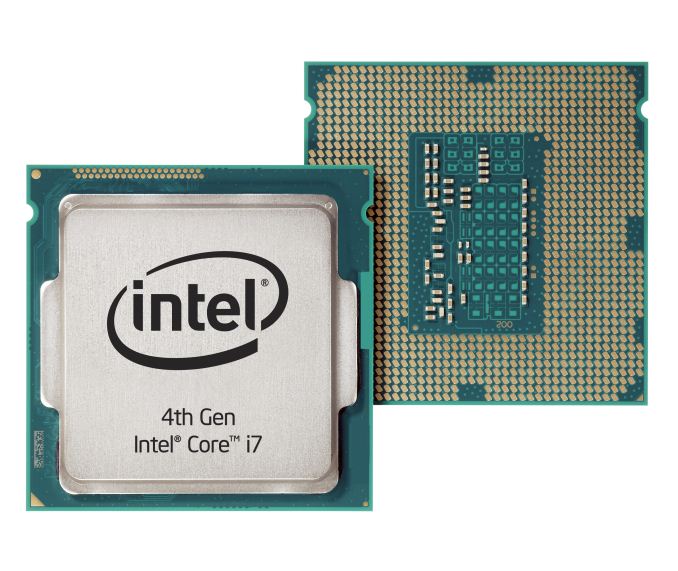
















Bookmarks